Manorbier is a lovely village which sits on the South Pembrokeshire coast. In the village is a beautifully situated mediaeval castle. The village War Memorial is in the form of a Celtic Cross, situated by the castle, and on this cross are the names of the 26 men of the village who died in both World Wars, 23 in the First World War and three during the Second World War. There is an identically named memorial outside the Church, as well as several individual plaques within the Church. Also, I have discovered several local men who died in the Great War who are not on the Memorial, so their details have been added below.
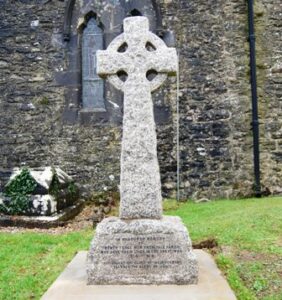
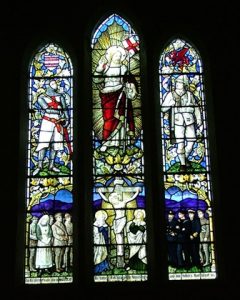
The Great War, 1914-1918
Charles Allen, Sapper, 27915, Royal Engineers. Charles was born at Pembroke, the son of William and Frances Allen. The family later resided at Milton Cottage, Manorbier. He was a pre-war Army Regular, serving in the 11th Field Company, Royal Engineers, who were attached to the 2nd Division. The 2nd Division was among the first Divisions to move to France, and saw their first action at the Battle of Mons on 23 August 1914. They then withdrew South toward the Marne and Aisne, where they again fought in several rearguard actions, and finally helped stem the German attacks on the Aisne. Charles suffered wounds at some stage during this epic withdrawal, and was brought to the Military Hospital at Boulogne, where he Died of Wounds on 7 December 1914. He is buried in Boulogne Eastern Cemetery, Grave III. B. 56.
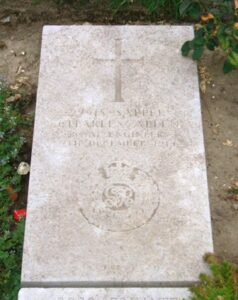
William Allen, Shoeing Smith, 99221, Royal Field Artillery. William was the brother of Charles, the son of William and Frances Allen. He enlisted at Woolwich into ‘B’ Battery, 177th Brigade, Royal Field Artillery. The Battery formed in England, and joined the 16th (Irish) Division, moving to France on the 22nd February, 1916. The Division fought on the Somme, before moving to Ypres, where they took part in the Battle of Messines in July, 1917. They moved just North of Ypres to the Pilckem area, where on 27 July 1917, in the build up to the Battle of Langemark, William was Killed in Action. He was aged 31, and is buried in Brandhoek New Military Cemetery, Grave II. A. 13.
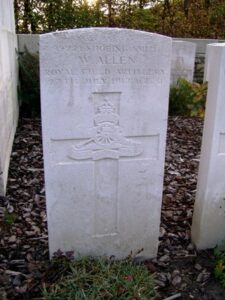
Fergusson Barclay, Captain, Royal Air Force. Ferguson was born at Weston-Super-Mare in 1877, the eldest son of Captain Percy F. D. Barclay and Mrs. Agnes Hermione Barclay. The family had moved to Tenby 1881, still keeping a home at Manor Mead, Weston-super-Mare, and also a home at Manorbier. Ferguson was then educated at St. Peters, Weston-super-Mare, and at Malvern Cottage. Ferguson had been commissioned from the Dorset and Somerset Royal Engineers into the Somerset Light Infantry upon the outbreak of War, and then volunteered into the Royal Air Force. He was seriously injured in an aeroplane accident, and Died of Accidental injuries at Harling Road Hospital, Norfolk on 7 December 1918 aged 41, and is buried in Weston-super-Mare Cemetery, Grave 4067.
William George Brown, Sapper, 69431, Royal Engineers. William was born at Robeston Wathen on 19 November 1882, the son of Thomas and Margaret Brown. He had trained as a Carpenter, and had six years service with the Pembroke Yeomanry prior to the Great War. William married Annie Phillips, of Jameston, Manorbier in 1901, and the couple had seven children. He enlisted at Pembroke into the Royal Engineers on 2 March 1915, and was posted to France on 9 August 1915 to join the 63rd Field Company, RE, which was attached to the 9th (Scottish) Division. The Division saw its first major action during the Battle of Loos. They then took part in the Battle of the Somme, fighting at the opening Battle of Albert, and then at the Battle of Bazentin, where they captured Longueval. William was killed in action at Longueval on 17 July 1916, aged 33, and is commemorated on the Thiepval Memorial, Pier & Face 8 A & 8 D.
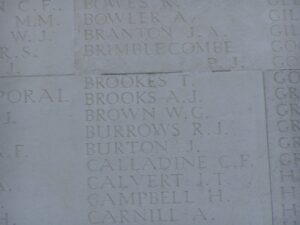
Frederick James Mansell Bryant, Second Lieutenant, Welsh Regiment. Frederick was born at Pembroke in 1895, the only child of William Hugh Owen Mansell Bryant and Lillian Maude Bryant. The family later resided at Manorbier. Frederick was commissioned into the 1/4th Battalion, the Welsh Regiment, part of 159 Brigade, 53rd (Welsh) Division. The Division fought at Gallipoli, suffering heavily, and were transferred to Egypt upon withdrawal from the Peninsula. They defended the Suez Canal, before advancing into Palestine in 1917, and it was on the first day of the Battle of Gaza, on 26 March, 1917, that Frederick was Killed in Action. He is commemorated on the Jerusalem Memorial, Panel 30 to 32.
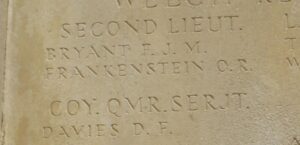
George Thompson Bush, Leading Victualling Assistant, M/2588, Royal Navy. George was born on 30 December 1895, the son of Henry Charles Bush and Emma Bush, The Sozar, Manorbier. His father Henry had been a long serving seaman with the Royal Navy, and George followed in his father’s footsteps, and served aboard H.M.S. Lion. Lion was the flagship of Admiral Jellicoe in the Battle of Jutland. He survived the war, but eventually Died at home of sickness on 18 October 1918. He is buried in the North part of Manorbier (St. James) Churchyard.
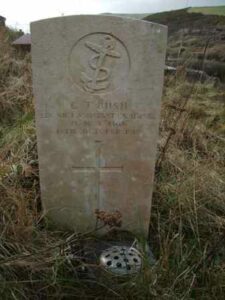
Thomas Lloyd Davies, Third Mate, Mercantile Marine. Thomas was the son of Thomas and Sarah Jane Davies, of Glyder, Manorbier. He served in the Mercantile Marine, aboard S.S. “Galgorm Castle” (Belfast). The ship was captured by a German Submarine on 27 February 1917 and was shelled and sank. Thomas was killed aboard the ship, and so is commemorated on the Tower Hill Memorial.
Reginald Humphrey Harrington, Private, 7020, Australian Infantry. Reginald was born at Manorbier, the son of Joseph and Kezia Harrington of Tudor Lodge. Reginald was 19 when he emigrated with his brother to Australia, and was living with him at Wagin, Western Australia when they both decided to enlist. His brother William was the first in France and the first to die, with Reginald sailing later, as part of the 23rd reinforcements for the 16th Battalion, AIF on 23 December 1916 from Fremantle. Reginald arrived in England on 11 March 1917, and joined up with the Battalion at Havre on 8 June 1917. The 2nd Australian Division was sent to Ypres, where it fought in the Battle of Passchendaele. Reginald was wounded at the opening Battle of Messines. Reginald Died of Wounds on 6 August 1917 aged 23, and is buried at Kandahar Farm Cemetery, in Grave II. G. 3. His brother William also fell.
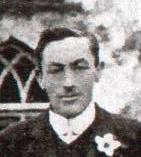
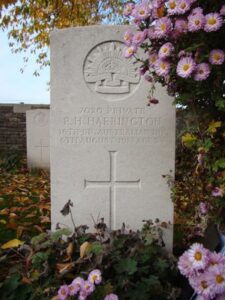
William Joseph Harrington, Private, 6525, Australian Infantry. William was born in Boscombe, near Bournemouth, and was the son of Joseph and Kezia Harrington, of Tudor Lodge, Manorbier. After being educated at Manorbier, he worked as an Agricultural Labourer, but also served in the Pembroke Yeomanry prior to emigrating to Australia. In Australia, he worked on the railways as a Platelayer at Wagin, Western Australia, and enlisted into the Australian Imperial Force at Perth, being enrolled into the 16th Battalion, AIF, part of the 4th Brigade, 2nd Australian Division. William was part of the 21st reinforcements for his Battalion, and they embarked at Fremantle on 13 October 1916. William was lucky enough to miss the bloodshed of the Somme battles which the Australian forces went through, but was wounded and captured at Armentieres. He Died of Wounds on 10 May 1917, aged 33, at Saltau P.O.W. Camp, Germany. He is buried at Hamburg Cemetery, Germany, in Grave IV. G. 14. His brother William also fell.
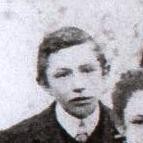
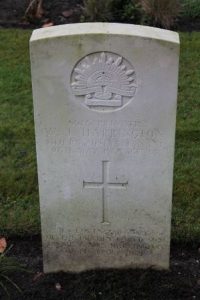
Henry Thomas Hughes, Sergeant, 371118, Royal Garrison Artillery. Henry was born at Ludchurch in 1886, and was the husband of Annie Hughes, of Lydstep Village, Penally. He enlisted at Tenby into the 114th Siege Battery, Royal Garrison Artillery. Henry suffered Wounds in Action during Spring, 1917, and was brought to the massive Military Hospital at Etaples, where he Died of Wounds aged 30, on the 11th May 1917. Henry is buried in Etaples Military Cemetery, in Grave XVIII. L. 10.
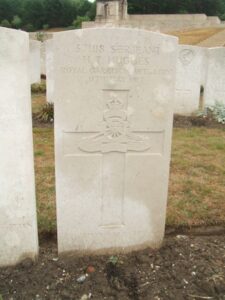
Albert Austin Johns, Shoeing Smith, 11429, 14th King’s Hussars. Albert was born in Pembroke, the son of William and Emma Johns, of Ash Cottage, Manorbier, and the brother of William below. He enlisted at Pembroke into the 14th (King’s) Hussars, who were stationed in Mhow, India at the outbreak of war. They moved to Mesopotamia, where they joined the 6th Indian Cavalry Brigade, which fought in Mesopotamia throughout the course of the Great War. Albert was Killed in Action in Mesopotamia on 15 December 1916, aged just 20. He was buried in Amara War Cemetery, Iraq, in Grave XXV. His brother Wilfred also fell.
Wilfred Styne (William) Johns, Private, 8318, Welsh Regiment. William was born in Manorbier, the son of William and Emma Johns, of Ash Cottage, Manorbier. He enlisted at Cardiff into the 2nd Battalion, Welsh Regiment, which was attached to 3 Brigade, 1st Division. The Division was rushed to France at the outbreak of War, and fought in the Battle of Mons, and the retreat down to the Aisne, where the first Welsh V.C. of the War was gained by William Fuller of Laugharne, when he rescued the badly wounded Captain Mark Haggard of the 2nd Welsh at Chivy. They moved to Flanders after they had helped stall the Germans on the Aisne, and fought at the First Battle of Ypres. On 9 May 1915 the Battle of Aubers Ridge began in French Flanders, and the 2nd Welsh were in the thick of the action. William was Killed in Action this day, aged 31, and is commemorated on the Le Touret Memorial, on Panels 23 and 24. His brother Albert also fell.
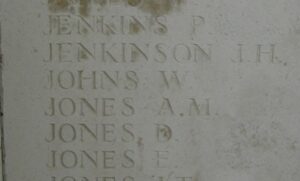
William Basil Loxdale Jones, MID, Flight Lieutenant, Royal Naval Air Service. William was born at Holy Trinity, Brompton, London on 16 February 1890, the son of the Bishop of St. David’s, William Basil Jones, and of his wife Anne Jones, nee Loxdale. The family had lived at Taliesin for several years, prior to moving to the Bishops Palace at Abergwili, Carmarthen. William served as an Observer in the Royal Naval Air Service, attached to 6 Wing, which was based in the Mediterranean. William was killed whilst flying as an Observer on patrol in the Adriatic on 7 January 1918, when his aircraft was lost at sea. He was 28 years old, and is commemorated on the Chatham Naval Memorial, Kent.
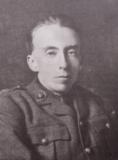
Edgar Lewis, Sergeant, 725073, Royal Field Artillery. Edgar was born in Monkton, the son of John and Margaret Lewis, of Rose Villa, Jameston, Manorbier. He enlisted at Neath into the 2nd (Glamorgan) Battery, 1st (Welch) Brigade, Royal Field Artillery, which served with the 53rd (Welsh) Division. Edgar served with the Division throughout their campaign on Gallipoli, and was with the Division in Egypt when he Died on the 23rd March 1917, aged 31. Edgar is buried at Alexandria (Hadra) War Memorial Cemetery, Egypt in Grave D. 93.
Gerald David Lomax, Second Lieutenant, Welsh Regiment. Gerald was born in Manorbier on 6 January, 1895, the son of Captain David Alexander Napier Lomax and Emma Annette. Gerald’s father was Killed in Action at Driefontain on the 10th March, 1900, leaving Annette widowed with her young sons Gerald and Charles. Annette married Major Frank Towle, and they set up home in Regent’s Park, London, from where Gerald and his brother Charles were brought up. Gerald was educated at Marlborough College and was gazetted into the 3rd Battalion, the Welsh Regiment on the 15th August, 1914. He was then attached to the 2nd Battalion, Royal Berkshire Regiment, and suffered serious wounds whilst with them at Fromelles on 9 May 1915. Gerald Died of Wounds on 11 May 1915 and was buried at Estaires Communal Cemetery, in Grave II. A. 5. He was just 20 years old. Gerald is not on the Manorbier Memorial.
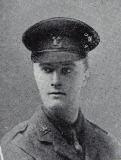
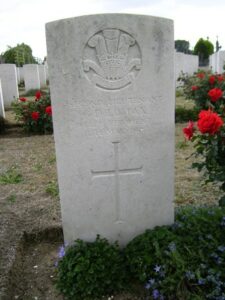
John Claude Murray, Second Lieutenant, South Wales Borderers. John was born in 1884, the son of William and Elizabeth Murray. He was commissioned into the 2nd Battalion South Wales Borderers, who were in Tientsin, China at the outbreak of War. After a famous encounter with German forces at Lao Shan, they returned to Hong Kong, where they embarked for the U.K. on the 4th December, 1914. They arrived at Plymouth on the 12th January, 1915, and here they were attached to the 87th Brigade, 29th Division. The Division sailed from Avonmouth on the 16th March, 1915 and landed at Egypt, from where they embarked to Mudros on the 10th April. They landed at Cape Helles, Gallipoli, on the 25th April 1915, and remained there for the duration, suffering heavy casualties. On the 2nd January 1916 the Division was withdrawn from Gallipoli, and landed at Marseilles (via Egypt) on the 29th March, 1916. The first engagement for the Division was at the opening of the Battle of the Somme, between Beaumont Hamel and Thiepval, where the 2nd S.W.B. suffered heavily. John was Killed in Action on 9 July 1916, and is commemorated on the Thiepval Memorial, Pier and Face 4 A.

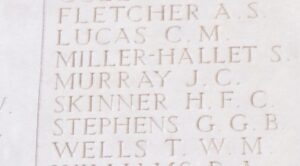
Arthur Owen Philipps, Sergeant, 117043, Canadian Mounted Rifles. Arthur was born on 26 June 1879, the son of the Reverend James Joseph Philipps and Emma Philipps (nee Hutchinson), of Windrath, Manorbier. He served during the Boer War with the 102nd Yeomanry, and later emigrated to Canada where he worked as a rancher. Arthur enlisted into the 1st Canadian Mounted Rifles (Saskatchewan Regiment), at Calgary on 4 January 1915. The C.M.R. formed on 15 March 1915 at Bordon. They converted to Infantry on 1 January 1916 being attached to 8th Brigade, 3rd Canadian Division. Upon arriving in France the Division were sent to the Western Front, in the Flanders sector, and on 2 June 1916, took part in the Battle of Mount Sorrel, where Arthur was Killed in Action that same day, aged 38. Arthur is commemorated on the Ypres (Menin Gate) Memorial, Ieper, on Panel 18 – 26 – 28.
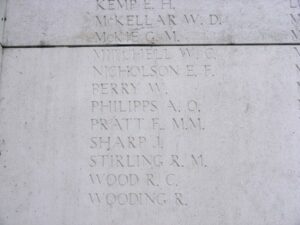
The Honorable Colwyn Erasmus Arnold Philipps, Captain, Royal Horse Guards. Colwyn was born on 11 December 1888, the son of John Philipps, the Right Honorable the 1st Viscount St. David’s, P.C. and his wife, Leonora Gerstenberg, of 3, Richmond Terrace, Whitehall, London. He was educated at Eton and Sandhurst. At the age of 20 he received a Commission into the Royal Horse Guards, then on 30 July 1909 had been promoted to full Lieutenant, and was Captain by the outbreak of war. The R.H.G. were attached to the 7th Cavalry Brigade, 3rd Cavalry Division on 1 September 1914 and landed at Zeebrugge at the beginning of October. They fought in the defence of Antwerp before being sent to Ypres, taking part in the First and Second Battles of Ypres. It was during Second Ypres, at the Battle of Frezenberg, that Colwyn was killed in Action on 13 May 1915, aged 26. He is commemorated on the Ypres (Menin Gate) Memorial, on Panel 3. In a letter sent to his bereaved parents by a brother Officer, it was said “He fell in an attack on the German Trenches on Thursday, 13th. His end was worthy as his life, as he was the first man in the German trenches and killed five Germans before he was shot in the head at close quarters and instantly killed.” His brother Roland also fell. During his short life, Colwyn had gained a strong reputation for his poetry, putting him on the list of the famed War Poets of the Great War. His poems were published after his death.
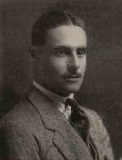
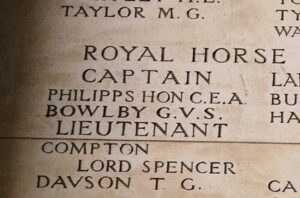
The Honorable Roland Erasmus Philipps, MC, Captain, Royal Fusiliers. Roland was born on 27 February 1890, the second son of John Philipps, the Right Honorable the 1st Viscount St. David’s, P.C. and his wife, Leonora Gerstenberg, of 3, Richmond Terrace, Whitehall, London. He was educated at Winchester College and New College, Oxford. Roland was an important early member of the Boy Scouts. In July 1912 he was appointed Assistant District Commissioner for East London. In 1913 he was appointed Commissioner for North East London, and in November 1913 he was made responsible for all of East London. Roland was commissioned into the 9th Battalion Royal Fusiliers, part of 36 Brigade, 12th Division. The Division assembled at Shorncliffe during August 1914 and moved to France at the end of May 1915. Their baptism of fire was at Ploegsteert Wood on 23 June 1915, and later at the Battle of Loos. They held the line at Loos until June, and they were moved in readiness for the Somme Offensive. They relieved the decimated 8th Division at Ovillers-la-Boiselle on 1 July, and took two lines of German trenches, but then stuttered to a halt. On 7 July 1916 the Brigade attacked again, but were decimated by German shell-fire in Mash Valley, but still managed to capture their objective of Ovillers. Roland was killed in Action this day, aged 26. He is buried in Aveluy Communal Cemetery Extension, Grave H. 32. His brother Colwyn also fell.
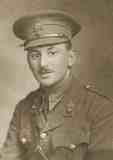
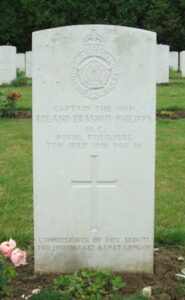
William Phillips, Private, 27695, Royal Welsh Fusiliers. William was born in Manorbier in 1885, the son of William and Sarah Phillips. He married Mary Price on 25 April 1903, and the couple set up home at 220, Stanstead Road, Forest Hill, London. William enlisted at Holborn on 16 May 1915 into the 17th Battalion Royal Welsh Fusiliers. After training at Colwyn Bay, from 14 July 1915 onwards the battalion became part of 115 Brigade, 38th (Welsh) Division. After their inauguration into trench life in the Armentieres sector, the Division were brought to the Somme, to participate in an attack on Mametz Wood. Here they suffered terrible casualties, and took longer to take the Wood than the Army Top Brass had planned, which unjustly gave their reputation a battering. William was Killed in Action during the opening attack on the wood, on 10 July 1916, Aged 32. He is buried in Caterpillar Valley Cemetery, Longueval, in Grave X. F. 18.
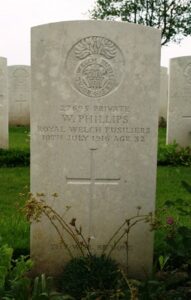
George Rixon, Private, 37712, Welsh Regiment. George was born in Tenby, the son of William and Fanny Rixon. The family resided in Manorbier before the war. He enlisted at Pembroke into the 8th Battalion, the Welsh Regiment, part of 40 Brigade, 13th (Western) Division, but in January 1915 they became the Pioneer Battalion to the Division. On 7 June 1915 the Division received orders to move to the Mediterranean. They left the U.K. on 12 June, and landed at Cape Helles, Gallipoli on 6 July 1915. They were later withdrawn to Mudros before being landed on ANZAC Cove on 3 August, fighting through the Battles of Sari Bair, Russell’s Top and Hill 60 before transferring to Suvla Bay, in defensive duties. It was at Suvla Bay that George was wounded. He was transferred to Hospital Ship, but Died of Wounds on-board, and was buried at sea the same day, on 4 December 1915, aged 20. George is commemorated on the Helles Memorial, Turkey on Panel 140 to 144. His brother Thomas also fell.
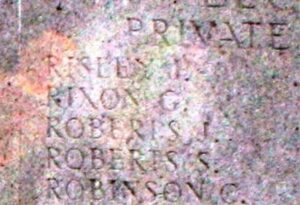
Thomas Rixon, Pioneer, 26756, Royal Army Service Corps. Thomas was born in Manorbier, the son of William and Frances Rixon, of Jameston, Manorbier. He enlisted at Pembroke in November 1914 into the Pembroke Yeomanry, but was discharged on 19 October 1915 after being deemed unfit for service. Thomas the re-enlisted into the 344th Road Construction Company, Royal Army Service Corps, and later transferred into the 334th Road Construction Company, Royal Engineers. Thomas Died of Sickness in Hospital at France on 5 November 1918, aged 28 and is buried at St. Sever Cemetery Extension, Rouen, in Grave S. II. Y. 28. His brother George also fell.
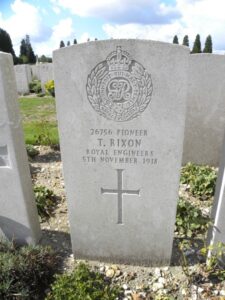
Benjamin David Scourfield, Private, 320091, Welsh Regiment. Benjamin was born in Manorbier on 19 September 1896, the son of William and Mary Scourfield, of Gable Cottage. He enlisted at Tenby into the Pembroke Yeomanry, with the Army Number 445. The Pembroke Yeomanry formed part of the 1st Mounted Division in Norfolk. In November 1915 the Division were dismounted, and sent to Egypt, landing March 1916. On 2 February 1917 the Pembroke Yeomanry were merged with the Glamorgan Yeomanry to form the 24th Battalion, the Welsh Regiment, part of 231 Brigade, 74th (Yeomanry) Division, and Ben’s number changed to 320091. The Division fought in the Palestinian Campaign, Benjamin was Killed in Action with them, during the Third Battle of Gaza, on 7 November 1917 aged 22. He was buried at Beersheba War Cemetery, Israel, Grave K. 56.
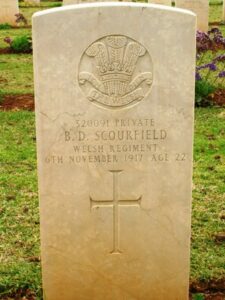
William Shipley, Stoker 1st Class, 309117, Royal Navy. William was born on 1 November 1885, the son of Thomas and Elizabeth Shipley, of Sutton-on-Trent, Newark, Notts. He served with the Royal Navy prior to the war, and was based at Pembroke, when he married Mary Davies at Manorbier in 1910. Mary later set up the family home at 67, High St., Midsomer Norton, Bath. William served in the Royal Navy aboard H.M.S. Good Hope, an Armoured Cruiser. At the outbreak of war she joined the 6th Cruiser Squadron at Scapa Flow, but was then diverted to the South Atlantic. The Good Hope left Port Stanley, on the Falkland Isles, on 22 October, accompanied by H.M.S. Monmouth, in search of the German East Adriatic Squadron, but was sank along with the Monmouth at the Battle of Coronel on 1 November, 1914, going down with all hands, including William Shipley. He was 28 years old, and is commemorated on the Portsmouth Naval Memorial, Panel 4.
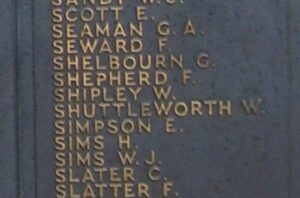
Frederick George Thomas, Sapper, 159164, Royal Engineers. Frederick was born at St. Twynnell’s in 1887, the son of Elisabeth Thomas. Elizabeth lived with her father William and her daughter Elizabeth Amy Thomas at Manorbier, prior to marrying David Beynon in 1894. Frederick and his sister were brought up with their mother and stepfather at Pwllcrochan, Manorbier, and Frederick trained as a carpenter. He married Evangeline Burn on 27 February 1916, and the couple set up home at The Stores, Manorbier, where their son Frederick Gerald Thomas was born on 16 March 1917. Frederick had enlisted into the Royal Engineers on 6 December 1915, and was posted to France on 3 October 1916, joining the 5th Provisional Company, Royal Engineers. Frederick was wounded during the German offensive in Flanders on 16 April 1918, and was evacuated back to hospital in England. His papers show that he had suffered terrible injuries, being struck by shell fragments to his face, skull and jaw. After lengthy treatment at the 2nd London General Hospital, Frederick was discharged from the army on 8 August 1918, but never recovered, dying of his wounds at home on 23 December 1919. Frederick is buried in Manorbier (St. James) Churchyard.
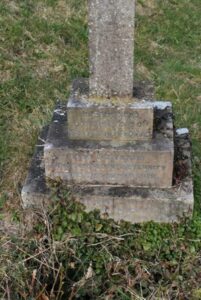
Benjamin Wharton, Private, 226088, King’s Shropshire Light Infantry. Benjamin was born in Lamphey in 1885, the son of William and Maria Wharton. He enlisted at Llanelli into the Cheshire Regiment, but transferred into the 10th Battalion, King’s Shropshire Light Infantry, part of the 231st Brigade, 74th Division. The Division fought in the Palestinian Campaign before being sent to France, landing at Marseilles during May 1918. The British and Dominion Armies had suffered terrible losses during the German Spring Offensive, and the 74th Division were rushed back to reinforce the front. Here they fought in the Battle of Bapaume before being moved to French Flanders, and it was during the advance in Flanders that Benjamin was Killed in Action on 2 September 1918, aged 33. He is buried at Sailly-Saillisel British Cemetery, Somme, in Grave II. J. 9.
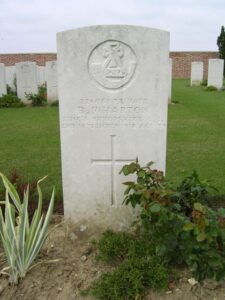
George Williams, Private, 430860, Canadian Infantry. George was born in Pembroke on 14 August 1883 the son of George and Mary Williams, of Newton Crossing, Manorbier. He served in the Royal Navy for several years, then emigrated to Canada, where he worked as a labourer, and enlisted into the Canadian Infantry at Victoria, British Columbia, on the 31st March, 1915. He was posted into the 28th Battalion Canadian Infantry (Saskatchewan Regiment), which formed part of the 6th Brigade, 2nd Canadian Division. The Division formed in Britain, and embarked for France in September 1915, spending a long, cold Winter at Ploegsteert Wood and St. Eloi, south of Ypres. The Battle of Mount Sorrel began on the 2nd June, 1916 and it was here that George was Killed in Action, on the 6th June 1916, aged 32. George is commemorated on the Ypres (Menin Gate) Memorial, on Panel 18 – 26 – 28.
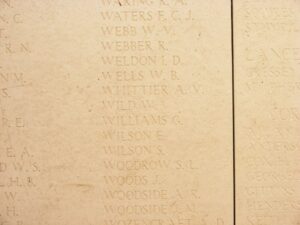
William Williams, Private, 8195, Welsh Regiment. William was born at Carew in 1884, the son of William and Elizabeth Williams. He married Charlotte in 1908, and the couple resided at Jameston, Manorbier. William enlisted into the 3rd Battalion, Welsh Regiment, and was posted to France on 13 August 1914 with the 2nd Battalion, Welsh Regiment, which was attached to 3 Brigade, 1st Division. William then took part in the retreat from Mons to the Marne, and fought at the Battle of the Aisne, in the action in which William Fuller gained the first Welsh Victoria Cross of the war. The Division then moved to Ypres, and saw heavy fighting while halting the German drive towards Ypres, on the Menin Road. On 12 May 1915 he was admitted to No. 6 General Hospital, Boulogne after falling ill, and was invalided home for a while. He returned to action after, and survived the war, but sadly died of wounds at home on 14 September 1920, aged 36. He is buried in Manorbier (St. James) Churchyard. Charlotte later remarried, to William H Glanville, and lived at 1, Bridge Street, Tenby.
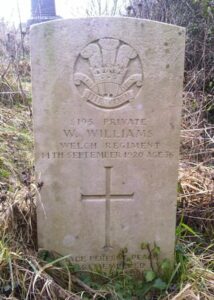
World War Two, 1939-1945
John Stephen Adams, Lieutenant, Royal Naval Volunteer Reserve. John was the son of Colonel John Loftus Adams, and of Hermione Agnes Caroline Adams, of Holyland, near Tenby. He served with the Royal Naval Volunteer Reserve, aboard H.M. Trawler Stella Capella. She was a trawler which had been purchased into the Royal Navy in August 1939 and converted for anti-submarine duties, joining the 12th A/S Strike Force at Belfast. During 1940 she took part in the Norwegian campaign, and in April 1941 joined the 41st A/S Group at Iceland. Stella Capella was on patrol off Iceland on 19 March 1942 when she was torpedoed and sunk by the German submarine U-701, with the loss of all hands. John was 30 years old when he died that day, and is commemorated on the Lowestoft Naval Memorial, Suffolk. John’s parents are buried at Manorbier Churchyard, and John is commemorated on their headstone there. John is commemorated at Pembroke.
William Charles Austin Johns, Leading Stoker, D/KX 92946, Royal Navy. William was the son of William Charles Johns and Annie May Johns (nee Morse), of Manorbier. He served in the Royal Navy, as Stoker aboard HMS Neptune. Neptune was a Cruiser, and was leading Force K, a Cruiser raiding squadron. Their task was to destroy German and Italian convoys carrying troops and supplies to Libya, in support of Rommel’s army in North Africa. On the afternoon of 18 December 1941 the squadron was despatched from Malta to intercept an important enemy convoy bound for Tripoli. The three cruisers of Force K, the Neptune, Aurora and Penelope, supported by the destroyers Kandahar, Lance, Lively and Havock, were steaming south, in single line ahead when the Neptune struck a mine. The Aurora, her next astern, also struck a mine, and two minutes later another mine hit Penelope’s port side. Neptune reversed her engines, but hit another mine, which wrecked her steering gear and propellers and brought her to a standstill. The cruiser force had run into a minefield in a depth of water and at a distance from land which made it utterly unexpected. At around 04.00 Neptune struck another mine, and turned over and sank. She went down quickly, with the loss of 756 men; only one survived. William was one of the men killed on 18 December 1941, and was 20 years old. He is commemorated alongside his crewmates on the Plymouth Naval Memorial, Devon. Two of his uncles, Albert and Wilfred had been killed during the Great War.
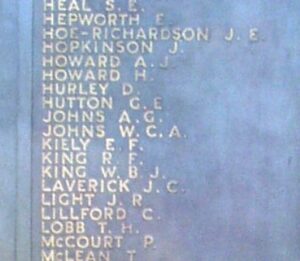
William James Kinsey, Private, 7645624, Royal Army Ordnance Corps. William was the son of Mr. and Mrs. W. J. Kinsey, and the husband of Mary (May) Kinsey, of Wolverhampton. He served with the Royal Army Ordnance Corps, and died on active service on 22 August 1942, aged 26. William is buried at Luton General Cemetery, Bedfordshire.
George Webster, Gunner, 847445, Royal Artillery. George was the son of William George and Sarah Ann Webster of Leeds. He married Sarah L Lewis, of Manorbier in 1937. George must have been based locally with the Royal Artillery, and was posted to Hong Kong with 8 Coast Regiment, Royal Artillery. George was captured by the Japanese when Hong Kong surrendered on 25 December 1941. On 27 September 1942 George was among over 1,800 POW’s who were herded aboard the Japanese Hell-Ship Lisbon Maru, which set sail for Japan. On 2 October 1942 the Lisbon Maru was torpedoed and sunk by the American submarine USS Grouper off the Chinese coast. Over 1,000 POW’s were needlessly lost in the sinking. George was 30 years old when he died that day, and is commemorated on the Sai Wan Memorial, Hong Kong. George is not commemorated locally.
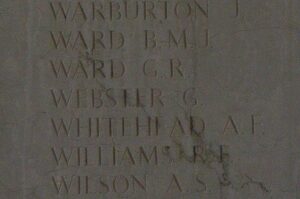
Morgan James Williams, Corporal, 3954984, The Welch Regiment. Morgan was born in 1908, the son of William and Mary Williams, of Heath Cottage, Jameston, Manorbier. Like many other local men served with the Territorial Army, serving with the 1/5th Battalion, Welch Regiment, which was attached to the 53rd (Welsh) Division. The division trained in the UK for most of the war, but were landed on the Normandy Beaches at the end of June 1944, as part of the reinforcements to the Beachhead. During the coming weeks the 1/5th Welch fought through a series of bloody battles in the attempt to break out of Normandy, and it was on 21 July 1944 that the battalion saw its sternest fighting so far when they saw battle against a battalion of German SS Panzers and their Troops at Le Bon Repos Crossroads, who had attempted to regain some ground lost in the previous days. The Welch held them off after hours of desperate fighting, but Morgan was one of many men killed that day. He was 36 years old and is buried at Banneville-La-Campagne War Cemetery, France.
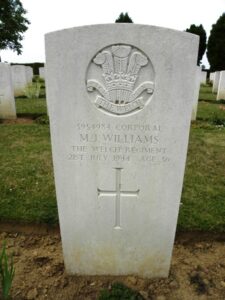
Unknown Airman
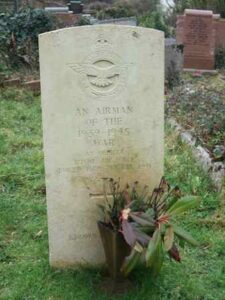
Buried within Manorbier Churchyard is an unidentified airman whose body was recovered during World War Two. The CWGC headstone states:
AN AIRMAN
OF THE
1939-1945 WAR
AN OFFICER
ROYAL AIR FORCE
BURIED 16TH OCTOBER 1941